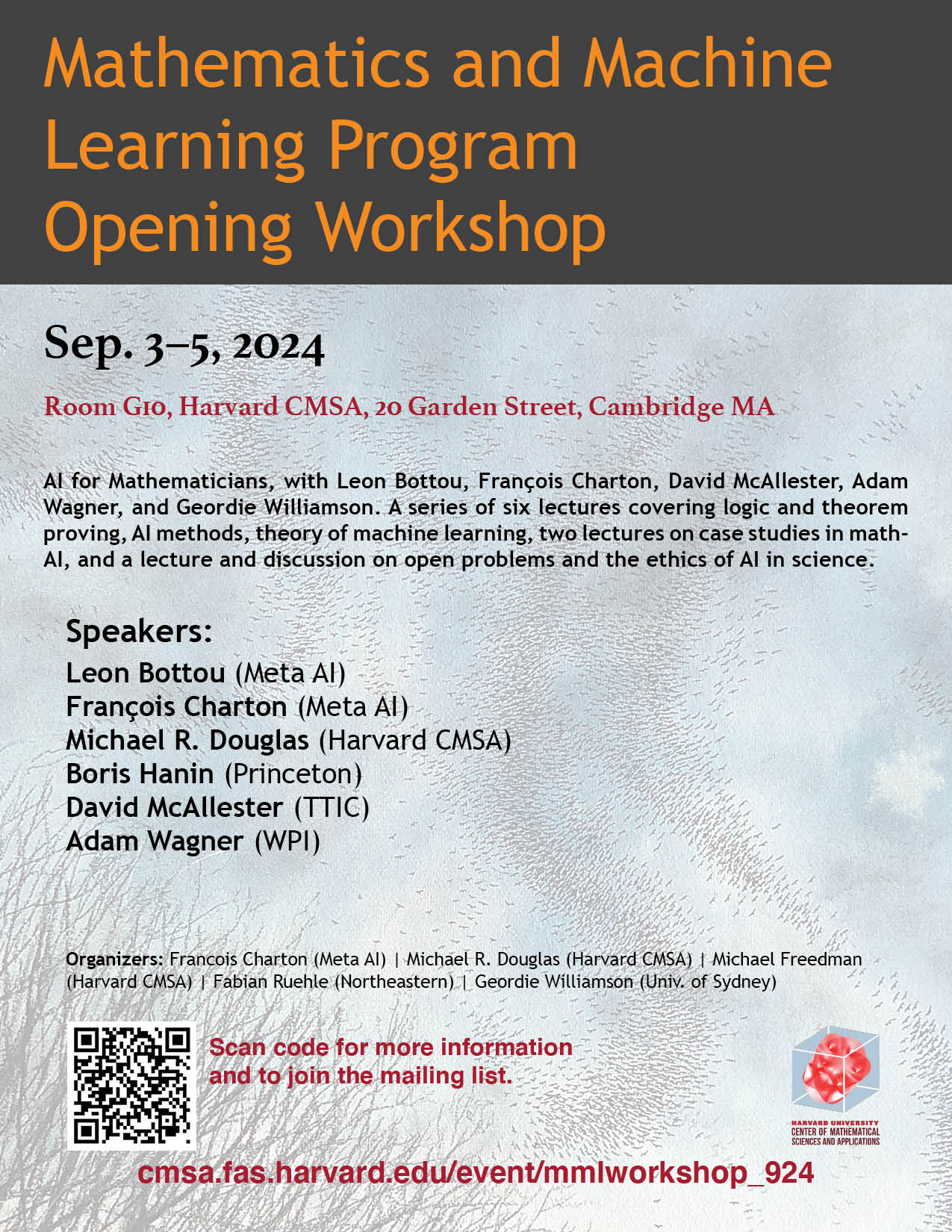
Mathematics and Machine Learning Program
Mathematics and Machine Learning Program Dates: September 3 – November 1, 2024 Location: Harvard CMSA,...
Read More
Mathematics and Machine Learning Program Dates: September 3 – November 1, 2024 Location: Harvard CMSA,...
Read More
On September 6-7, 2024, the CMSA will host the tenth annual Conference on Big Data....
Read More
Mathematics and Machine Learning Opening Workshop Dates: September 3 – 5, 2024 Location: Room G10,...
Read MoreFull Name Role Office # Affiliation Dates Email Address Iacopo Brivio Postdoctoral Fellow 112 CMSA ibrivio@cmsa.fas.harvard.edu Tomer Ezra Postdoctoral Fellow 109 CMSA tomer@cmsa.fas.harvard.edu Samy Jelassi Postdoctoral Fellow 109 CMSA sjelassi@cmsa.fas.harvard.edu […]
CMSA/Math Fall Gathering
Big Data Conference 2024